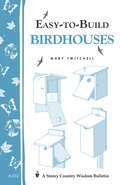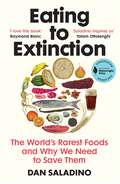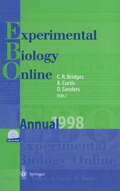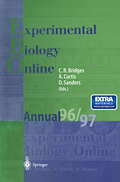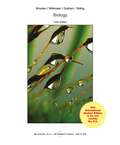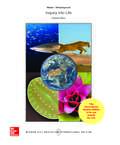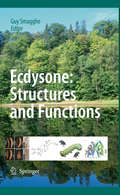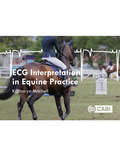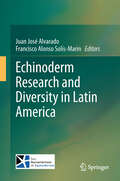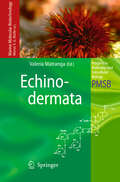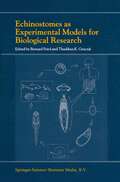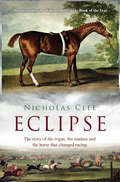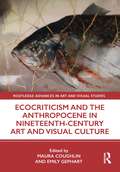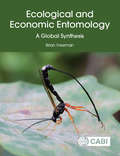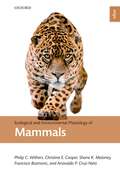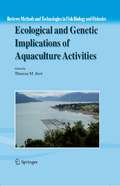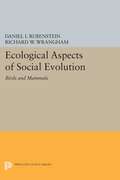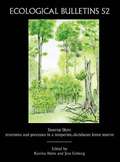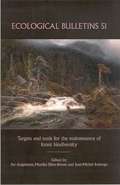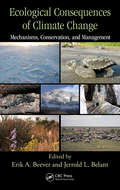- Table View
- List View
Easy-to-Build Birdhouses: Storey's Country Wisdom Bulletin A-212 (Storey Country Wisdom Bulletin)
by Mary TwitchellSince 1973, Storey's Country Wisdom Bulletins have offered practical, hands-on instructions designed to help readers master dozens of country living skills quickly and easily. There are now more than 170 titles in this series, and their remarkable popularity reflects the common desire of country and city dwellers alike to cultivate personal independence in everyday life.
Eating to Extinction: The World’s Rarest Foods and Why We Need to Save Them
by Dan Saladino'This inspiring and urgent book is one of the few food books that has ever given me goosebumps... A story full of both loss and hope.' BEE WILSON'We all need to pay more attention to what we are (and are no longer) eating. Dan Saladino inspires us to believe that turning the tide is still possible.' YOTAM OTTOLENGHI'I love this book... I wish the whole world could read it' RAYMOND BLANC--------------From a tiny crimson pear in the west of England to great chunks of fermented sheep meat in the Faroe Islands, from pistachios in Syria to flat oysters in Denmark, from a wild honey harvested with the help of birds to an exploding corn that might just hold the key to the future of food - these are just some of the thousands of foods around the world today that are at risk of being lost for ever. In this captivating and wide-ranging book, Dan Saladino spans the globe to uncover the stories of these foods. He meets the pioneering farmers, scientists, cooks, food producers and indigenous communities who are preserving food traditions and fighting for change. All human history is woven through these stories, from the first great migrations to the slave trade to the refugee crisis today. But Eating to Extinction is about so much more than preserving the past. It reveals a world at a crisis point: the future of our planet depends on reclaiming genetic biodiversity before it is too late. Eating to Extinction is an astonishing journey through the past, present and future of food, a love letter to the diversity of global food cultures, and a work of great urgency and hope.
EBO: Experimental Biology Online Annual 1998 (EBO - Experimental Biology Online Annual #1998)
by Christopher R. Bridges Dale Sanders Adam CurtisThough it is a pleasure to write a short foreword to this collection of excellent scientific papers covering a range of biological topics, the rather depressing feature is the small number of papers. All-electronic publishing is developing and your Editors do have great faith in it. One problem for potential authors has been the reluctance of the abstracting journals to pay any attention to electronic journals - perhaps Springer should make a rapid move in this area and start the first all-electronic journal abstracting this type of literature. However, even the paper citation journals are starting to pay attention to the medium. The particular advantages of all-electronic publishing are beginning to emerge more clearly and it is clear that publishing video material is a unique advantage of our format. Several papers took advantage of this - for example those by Riehle and others on cell behaviour in tunnels, by Bereiter-Hahn and Voss on zonation in the plasmalemma and by Pavlikova, Zicha, Chaloupkova and Vesely on cell motility of tumour cells. These papers made essential and extensive use of video material, publishing some material of great originality. The work on cell pola rity and calcium ions in Fucus embryos by Brownlee, Manison and Anning used animation to present their results in an especially clear way. The facility of use of animation is another special advantage of our type of publication that should be more widely used.
EBO — Experimental Biology Online Annual 1996/97 (EBO - Experimental Biology Online Annual #1996/1997)
by Christopher R. Bridges Adam Curtis Dale SandersIn March 1996 the Society of Experimental Biology (UK) together with two other international scientific societies, the Australian and New Zealand Society for Comparative Physiology and Biochemistry and the Society for Integrative and Comparative Biology (formally the American Society for Zoology) joined forces with Springer-Verlag, Heidelberg to produce one of the first fully electronic online, peer-reviewed biological journals, Experimental Biology Online. The present product represents the fruits of this joint venture and encapsulates Volumes 1 and 2 of the journal. This will be an ongoing series such that an archival version of the journal will be available to all libraries as well as the on-line version. At the outset this was "new land" for all concerned but the launching of a journal which would cover experimental biology in terms of Animal, Cell and Plant topics was daunting but we all felt that the use of electronic media and the internet would be ideally suited to this purpose.
Ebook: Inquiry into Life (UK Higher Education Science & Technology Bioscience)
by Mader WindelspEbook: Inquiry into Life
Ecdysone: Structures and Functions
by Guy SmaggheEcdysone is the steroidal prohormone of the major insect moulting hormone 20-hydroxyecdysone. It groups with its homologues the steroidal molting hormones in arthropods, but they also occur in other phyla where they can play different roles. Besides ecdysteroids appear in many plants mostly as protection agents (toxins or antifeedants) against herbivorous insects. The important developments and achievements in modern ecdysone science since the first edition in 1989 by J. Koolman have led to this new revised, expanded and retitled reference work. New chapters in this edition include RNA interference, the ecdysone receptor crystal structures and structure activity relationships, etc. Each article may also be read independently, as a review of that particular subject. Complete up-to-date coverage of many important topics - the book is divisible into five conceptual areas: (1) Distribution and diversity of ecdysteroids in the two kingdoms is still basis, (2) In the post-genomic era, ecdysteroid genetic hierarchies in insect growth and reproduction, (3) Role of cross talk of genes and growth factors in ecdysteroid titers and signaling, (4) Ecdysteroids function through nuclear and membrane receptors, and (5) Ecdysteroids in modern agriculture, medicine, doping and ecotoxicology. Each of the 23 chapters is written by scientists active in the reviewed research area and a truly distinguished international team of contributors has been chosen. Ecdysone, Structures and Functions will be of immense use and contains essential information for scientists, students, and professionals alike in entomology, endocrinology, physiology, chemistry, and agricultural, plant, biomedicine and environmental sciences.
ECG Interpretation in Equine Practice
by Katharyn MitchellAdvances in veterinary medical technology now provide easier and more affordable access to equine ECG recording and transmitting equipment, making ECG recordings a useful tool for equine veterinarians in both field and hospital settings. Covering the basics of equine ECG recording, analyses and interpretation, this book provides a practical approach with details of how to get the most information out of your ECG recordings. The only book dedicated to equine ECGs, it includes: - Numerous clear ECG illustrations - Worked case examples to put theory into practice - New pharmacological therapies and interventional techniques A hands-on guide for veterinarians to use when recording, diagnosing and treating arrhythmias in horses, this book will be invaluable to both specialists and those who find themselves evaluating the occasional equine patient.
Echinococcus: Control and Elimination of Echinococcosis with a Focus on China and Europe (Parasitology Research Monographs #19)
by Jian Li Wei Wang Heinz MehlhornThis volume provides a comprehensive overview of human echinococcosis, a zoonotic disease caused by tapeworm parasites of the genus Echinococcus. Both cystic- (hydatid disease) and alveolar echinococcosis are included, covering the most important disease forms of medical and public health relevance. Presented findings focus China and Europe and are at the same time of global significance for clinical management and control programs under the One Health approach.Echinococcosis is a relevant neglected tropical disease (NTD) and targeted for elimination by the WHO as a public health problem. The present book aids the critical actions for understanding the disease and its surveillance. In addition to fundamental information on tapeworm epidemiology, biology and immunopathogenesis, the chapters spotlight details on ultrasound diagnosis and staging, CT and MRI imaging. Moreover, molecular diagnostic tools, novel chemotherapeutics, and current vaccine research are discussed.The book is a valuable resource for human and veterinary medicine considering the Sustainable Development Goals research (SDG 3: Good Health and Well-being). Scientists, students, and medical professionals will find significant content on animal reservoirs, parasite transmission, prevention and treatment options.
Echinoderm Research and Diversity in Latin America
by Juan José Alvarado and Francisco Alonso Solís-MarínThis book compiles for the first time the development of echinoderm research in Latin America. The book contains 17 chapters, one introductory, 15 country chapters, and a final biogeographic analysis. It compiles all the investigations published in international and local journals, reports, theses and other gray literature. Each chapter is composed of 7 sections: introduction describes the marine environments, and main oceanographic characteristics, followed by a history of research account divided by specific subjects. The next section addresses patterns of distribution and diversity. A specific section would explain fishery or aquaculture activities. The next sections deal with environmental and anthropogenic threats that are affecting echinoderm, and any conservation or management action. Finally, a section with conclusions, needs and new lines of research. The book will include two appendixes with species lists of all echinoderms with bathimetric data, habitat and distribution.
Echinodermata (Progress in Molecular and Subcellular Biology #39)
by Valeria MatrangaMembers of the phylum Echinodermata are among the most familiar marine invertebrates. Forms such as the sea star have become virtually a symbol of sea life. Used in ancient oriental medicine as a source of bioactive compounds, sea cucumbers, sea stars and sea urchins are now used for the extraction and purification of cytotoxic, haemolytic, antiviral, antifungal, antifouling, antimicrobial and even anti-tumoural activities. In addition, of the five extant classes, sea urchins and sea cucumbers are important economic resources for current fishery and aquaculture. Molecular and cell biological techniques described in this book are, on the one hand, indicative of the improvements made over the years and, on the other, stress the need of their further exploitation for the sustainable production of bioactive compounds and their application in biomedicine.
Echinostomes as Experimental Models for Biological Research
by Bernard Fried T. K. GraczykEchinostomes are ubiquitous intestinal flatworm parasites of vertebrates and are of importance in human and veterinary medicine and wildlife diseases. Echinostomes can be maintained easily and inexpensively in the laboratory and provide good models for biological research ranging from the molecular to the organismal. Considerable but scattered literature has been published on the subject of echinostomes and a synthesis of this wide range of topics has now been achieved with the publication of this book, which presents a wide range of topics in experimental biology related to the use of echinostomes as laboratory models. It will have a special appeal to advanced undergraduates and graduate students in parasitology and should also appeal to professional parasitologists, physicians, veterinarians, wildlife disease biologists, and any biomedical scientists interested in new model systems for studies in experimental biology.
Echo Come Home
by Megan Rix'I wish I had a dog . . . It could be a big dog or a little one. It could be any colour or breed. Just most of all I'd like a hearing dog.'Eleven-year-old Jake is dreading his new school. No one understands how hard it is for him to make friends.But then Jake meets Echo. Echo is a stray puppy, training to be a hearing dog. With Echo by his side, Jake's confidence grows.But then something terrible happens and Jake and Echo are separated. Determined to find his way back to Jake, Echo sets out on the difficult journey home.With a long road ahead and danger all around, have Jake and Echo lost each other forever?
Eclipse: The Story Of The Rogue, The Madam And The Horse That Changed Racing
by Nicholas CleeEpsom Downs, 3rd May, 1769: a chestnut with a white blaze scorches across the turf towards the finishing post. His four rivals are so far behind him that, in racing terms, they are 'nowhere'. Watching Eclipse is the man who wants to buy him. An adventurer who has made his money through roguery and gambling, Dennis O'Kelly is also the companion of the madam of one of London's most notorious brothels. While O'Kelly is destined to remain an outcast to the racing establishment, his horse will go on to become the undisputed, undefeated champion of his sport. Eclipse's male-line descendants will include Desert Orchid, Arkel and all but three of the Derby winners of the past fifty years. And his astonishing life will be matched only by that of the rogue who owned him.
Ecocriticism and the Anthropocene in Nineteenth-Century Art and Visual Culture (Routledge Advances in Art and Visual Studies)
by Maura CoughlinIn this volume, emerging and established scholars bring ethical and political concerns for the environment, nonhuman animals and social justice to the study of nineteenth-century visual culture. They draw their theoretical inspiration from the vitality of emerging critical discourses, such as new materialism, ecofeminism, critical animal studies, food studies, object-oriented ontology and affect theory. This timely volume looks back at the early decades of the Anthropocene to query the agency of visual culture to critique, create and maintain more resilient and biologically diverse local and global ecologies.
Ecocriticism and the Anthropocene in Nineteenth-Century Art and Visual Culture (Routledge Advances in Art and Visual Studies)
by Maura Coughlin Emily GephartIn this volume, emerging and established scholars bring ethical and political concerns for the environment, nonhuman animals and social justice to the study of nineteenth-century visual culture. They draw their theoretical inspiration from the vitality of emerging critical discourses, such as new materialism, ecofeminism, critical animal studies, food studies, object-oriented ontology and affect theory. This timely volume looks back at the early decades of the Anthropocene to query the agency of visual culture to critique, create and maintain more resilient and biologically diverse local and global ecologies.
Ecological and Economic Entomology: A Global Synthesis
by Brian FreemanEcological and Economic Entomology is a comprehensive advanced text covering all aspects of the role of insects in natural ecosystems and their impacts on human activity. The book is divided into two sections. The first section begins with an outline of the structure, classification and importance of insects, followed by the geographical aspects of plant distribution and the complex defences plants marshal against herbivorous insects. Insect pests affecting plant roots, stem, leaf, and reproductive systems are covered in a comprehensive review. This section also covers insects that are important in medical and veterinary science, paying particular attention to those that transmit pathogens. The section concludes with the beneficial aspects of insects, especially their use in biological control, but also as soil formers and their importance in forensic science. Autecology (or single-species ecology) and its application to pest management is the focus of the second section of the book. Firstly, some general aspects of autecology are examined, including species abundance, competition and speciation, and relevant genetics. The classic general theories of insect population dynamics are reviewed, followed by chapters on life tables, time series analysis and mathematical models in insect populations. The final chapter reviews the application of autecology to the insect pests of forests, farms and orchards and to the control of insect vectors of diseases of humans and livestock. Particular attention is paid to environmentally friendly methods of pest management and the application of Integrated Pest Management (IPM) techniques. This volume is essential reading for professional entomologists and advanced students of agricultural, medical and veterinary entomology, insect ecology and conservation.
Ecological and Environmental Physiology of Mammals (Ecological and Environmental Physiology Series)
by Shane K. Maloney Philip C. Withers Christine E. Cooper Francisco Bozinovic Ariovaldo P. Cruz NetoMammals are the so-called "pinnacle" group of vertebrates, successfully colonising virtually all terrestrial environments as well as the air (bats) and sea (especially pinnipeds and cetaceans). How mammals function and survive in these diverse environments has long fascinated mammologists, comparative physiologists and ecologists. Ecological and Environmental Physiology of Mammals explores the physiological mechanisms and evolutionary necessities that have made the spectacular adaptation of mammals possible. It summarises our current knowledge of the complex and sophisticated physiological approaches that mammals have for survival in a wide variety of ecological and environmental contexts: terrestrial, aerial, and aquatic. The authors have a strong comparative and quantitative focus in their broad approach to exploring mammal ecophysiology. As with other books in the Ecological and Environmental Physiology Series, the emphasis is on the unique physiological characteristics of mammals, their adaptations to extreme environments, and current experimental techniques and future research directions are also considered. This accessible text is suitable for graduate level students and researchers in the fields of mammalian comparative physiology and physiological ecology, including specialist courses in mammal ecology. It will also be of value and use to the many professional mammologists requiring a concise overview of the topic.
Ecological and Environmental Physiology of Mammals (Ecological and Environmental Physiology Series)
by Philip C. Withers Christine E. Cooper Shane K. Maloney Francisco Bozinovic Ariovaldo P. Cruz NetoMammals are the so-called "pinnacle" group of vertebrates, successfully colonising virtually all terrestrial environments as well as the air (bats) and sea (especially pinnipeds and cetaceans). How mammals function and survive in these diverse environments has long fascinated mammologists, comparative physiologists and ecologists. Ecological and Environmental Physiology of Mammals explores the physiological mechanisms and evolutionary necessities that have made the spectacular adaptation of mammals possible. It summarises our current knowledge of the complex and sophisticated physiological approaches that mammals have for survival in a wide variety of ecological and environmental contexts: terrestrial, aerial, and aquatic. The authors have a strong comparative and quantitative focus in their broad approach to exploring mammal ecophysiology. As with other books in the Ecological and Environmental Physiology Series, the emphasis is on the unique physiological characteristics of mammals, their adaptations to extreme environments, and current experimental techniques and future research directions are also considered. This accessible text is suitable for graduate level students and researchers in the fields of mammalian comparative physiology and physiological ecology, including specialist courses in mammal ecology. It will also be of value and use to the many professional mammologists requiring a concise overview of the topic.
Ecological and Genetic Implications of Aquaculture Activities (Reviews: Methods and Technologies in Fish Biology and Fisheries #6)
by Theresa M. BertIn this book, numerous prominent aquaculture researchers contribute 27 chapters that provide overviews of aquaculture effects on the environment. They comprise a comprehensive synthesis of many ecological and genetic problems implicated in the practice of aquaculture and of many proven, attempted, or postulated solutions to those problems. This is an outstanding source of reference for all types of aquaculture activities.
An Ecological and Societal Approach to Biological Control (Progress in Biological Control #2)
by J. Eilenberg Heikki M. T. HokkanenBiological control is among the most promising methods for control of pests, diseases and weeds, and this book treats ecological and societal aspects together for the first time. The aim is to evaluate the significance of certain biological properties like biodiversity and natural habitats. In a societal approach terms like ‘consumer’s attitude’, ‘risk perception’, ‘learning and education’ and ‘value triangle’ are recognized as significant for biological production and human welfare.
Ecological Aspects of Social Evolution: Birds and Mammals
by Daniel I. Rubenstein Richard W. WranghamSeeking common principles of social evolution in different taxonomic groups, the contributors to this volume discuss eighteen groups of birds and mammals for which long-term field studies have been carried out. They examine how social organization is shaped by the interaction between proximate ecological pressures and culture"--the social traditions already in place and shaped by local and phylogenetic history.Originally published in 1987.The Princeton Legacy Library uses the latest print-on-demand technology to again make available previously out-of-print books from the distinguished backlist of Princeton University Press. These editions preserve the original texts of these important books while presenting them in durable paperback and hardcover editions. The goal of the Princeton Legacy Library is to vastly increase access to the rich scholarly heritage found in the thousands of books published by Princeton University Press since its founding in 1905.
Ecological Bulletins, Suserup Skov: Structures and Processes in a Temperate, Deciduous Forest Reserve (Ecological Bulletins)
by Katrine Hahn Jens EmborgSuserup Skov in Denmark is a well-preserved beech-dominated forest reserve with continuity in tree cover at least back to 4200 BC, indicating it to be a direct descendent of the primeval forests. Despite of documented historical impact from humans, Suserup Skov is now increasingly characterized by natural disturbance dynamics and is one of the best reference areas for naturalness in the nemoral part of northern Europe. This has attracted several research projects focussing on forest dynamics, ecology and biodiversity which are summarized in this issue of Ecological Bulletins. This volume focuses on three main areas: 1) stand structures and dynamics 2) water and nutrient cycling processes, and 3) vegetation patterns and processes. With a compilation of scientific reviews, detailed case-studies and experimental works, the volume provides a unique and in-depth overview of structures and processes in a single forest reserve. The aim is to establish a basic reference of science and practice within forestry and nature conservation.
Ecological Bulletins, Targets and Tools for the Maintenance of Forest Biodiversity (Ecological Bulletins)
by Per Angelstam Monica Donz-Breuss Jean-Michel RobergeMaintaining forest biodiversity by combining protection, management and restoration of forest and woodland landscapes is a central component of sustainable development. Evidence that there are threshold levels for how much habitat loss may be tolerated for viable populations of specialised species to be maintained. Policy-makers, businesses and managers pose questions about how to balance use of renewable forest resources and conserve biodiversity. Examples are presented on how biodiversity assessments can be made. Proposes how the critical gaps in our knowledge identified throughout the book could be filled through macroecological research and international co-operation.
Ecological Consequences of Climate Change: Mechanisms, Conservation, and Management
by Erik A. Beever Jerrold L. BelantContemporary climate change is a crucial management challenge for wildlife scientists, conservation biologists, and ecologists of the 21st century. Climate fingerprints are being detected and documented in the responses of hundreds of wildlife species and numerous ecosystems around the world. To mitigate and accommodate the influences of climate ch
